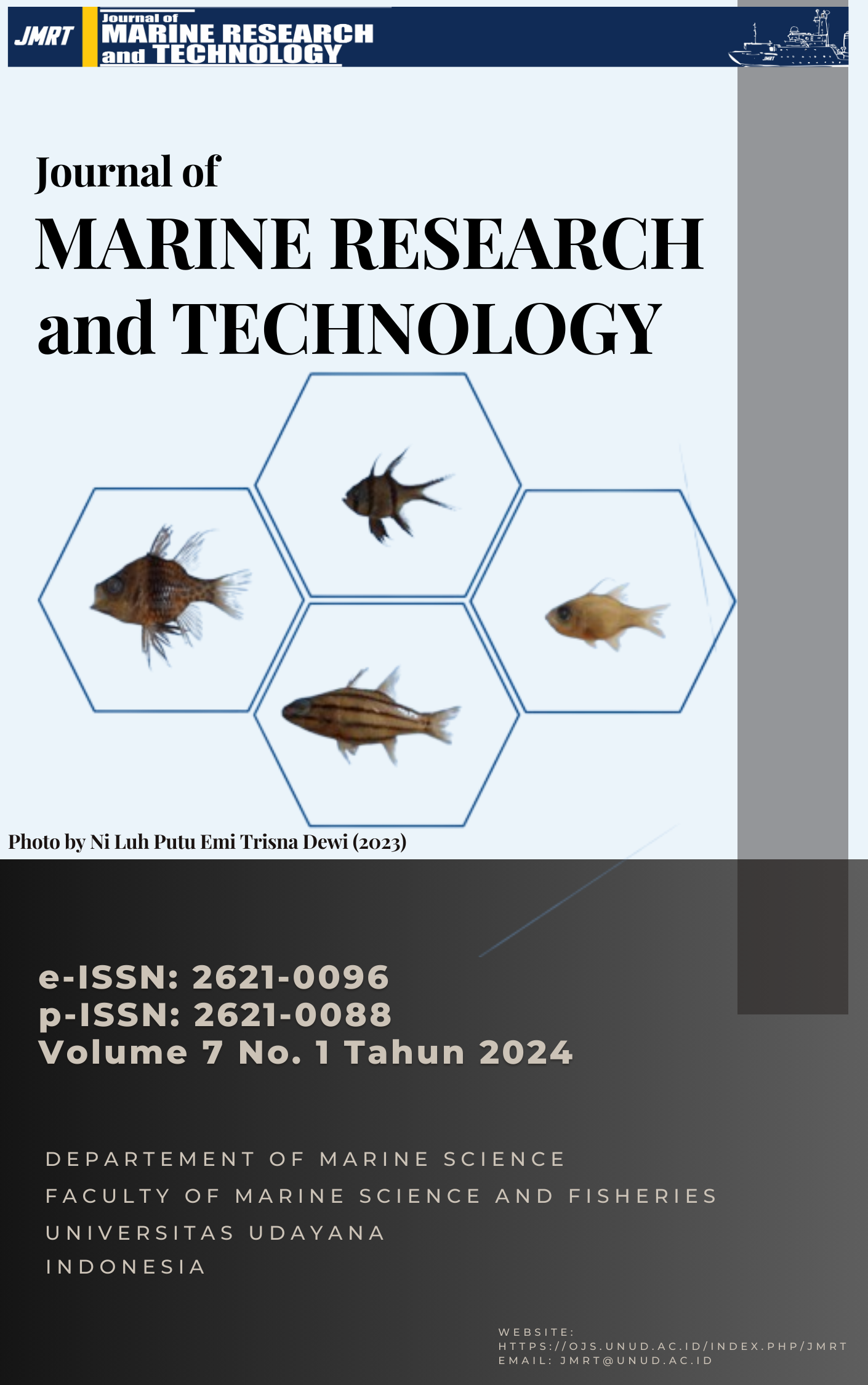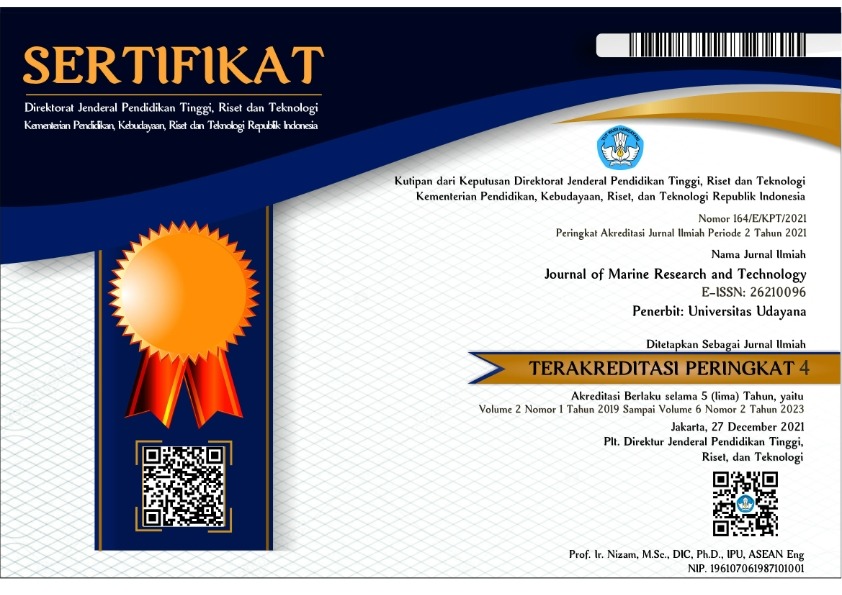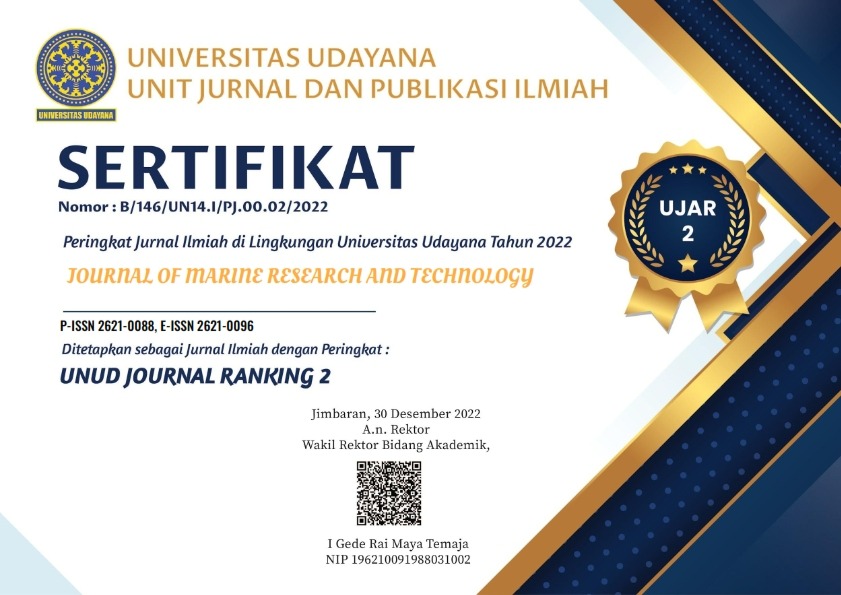Struktur Komunitas Epifauna pada Ekosistem Lamun di Pantai Prapat Agung dan Pantai Segara Ayu, Bali
Community structure; Density; Epifauna; Seagrass
Abstract
Seagrass, a flowering marine plant, has adapted to thrive in shallow seas where its stems grow along the substrate. Seagrass meadows offer numerous benefits due to the mutual interaction between seagrass and marine biota. The primary objective of this study was to determine the precise composition of the epifauna community and establish the relationship between epifauna abundance and seagrass density. The research was conducted between October and December 2022. Purposive random sampling was employed as the research methodology, with three stations selected at each research location. The findings revealed the presence of nine seagrass species, namely Cymodocea rotundata, C. serrulata, Enhalus acoroides, Halodule pinifolia, H. uninervis, Halophila ovalis, H. minor, Thalassia hemprichii, and Syringodium iseotifolium. The highest species density, recorded at Prapat Agung Beach, was observed in the H. uninervis type with a density of 216 ind/m2. Conversely, at Segara Ayu Beach, the highest species density was found in the C. rotundata type, with a 320/m2 density. Segara Ayu Beach exhibited the highest epifauna diversity, scoring 3.46 in the high category. Additionally, it displayed the highest epifauna uniformity, with a score of 0.92 in the high category. Prapat Agung Beach had the highest epifauna dominance index, scoring 0.19 in the low category. The correlation analysis between seagrass density and epifauna abundance yielded a correlation coefficient (r) of 0.779, indicating a strong relationship. The ANOSIM test results indicated a significant difference in the abundance of epifauna, with an R-value of 0.9657 and a ???? value of 0.0001.
Downloads
Copyright Notice
The copyright to this article is transferred to Journal of Marine Research and Technology (JMRT). The copyright transfer covers the exclusive right and license to reproduce, publish, distribute and archive the article in all forms and media of expression now known or developed in the future, including reprints, translations, photographic reproductions, microform, electronic form (offline, online) or any other reproductions of similar nature.






